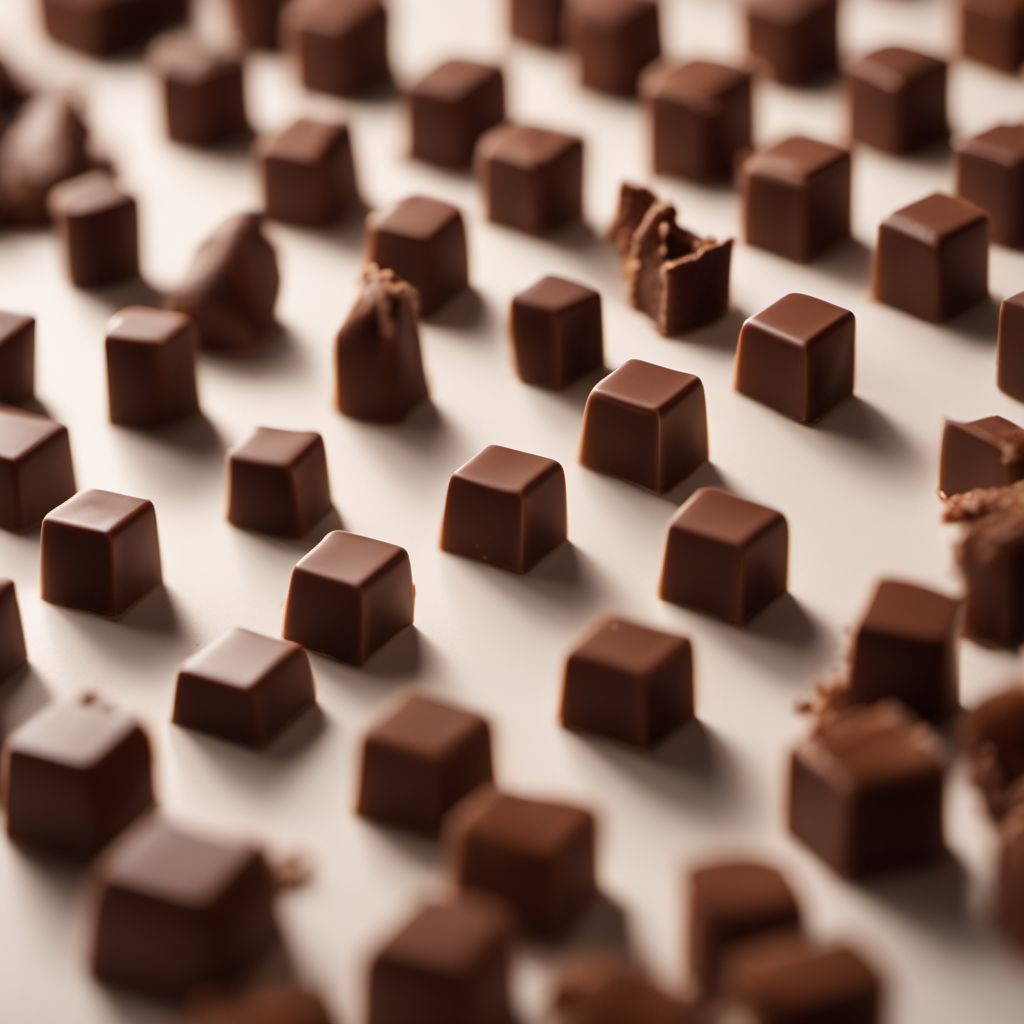
Ingredient
Family chocolate
"Decadent Delights: Exploring the World of Chocolate"
Chocolate is a versatile ingredient that comes in various forms, including dark, milk, and white chocolate. It is derived from the cacao bean, which is roasted and ground to produce cocoa solids and cocoa butter. The resulting mixture is then sweetened and processed to create the smooth and velvety texture we associate with chocolate. With its distinct aroma and melt-in-your-mouth quality, chocolate adds depth and complexity to desserts, beverages, and even savory dishes. Its taste can range from bitter and intense in dark chocolate to creamy and sweet in milk chocolate, offering a wide range of options for culinary exploration. The texture of chocolate can vary depending on its composition, with dark chocolate being firmer and less sweet compared to milk or white chocolate. Its appearance can range from glossy and smooth to matte and textured, depending on the manufacturing process and the addition of ingredients like nuts, fruits, or spices.
Origins and history
Chocolate has a rich history that dates back thousands of years. The cacao tree, native to the tropical regions of Central and South America, was cultivated by ancient civilizations such as the Mayans and Aztecs. They believed that cacao had divine properties and used it in religious ceremonies and as a form of currency. When the Spanish conquistadors encountered cacao during their exploration of the New World, they brought it back to Europe, where it gained popularity among the nobility. Over time, chocolate became more accessible to the general population, leading to the development of various chocolate-making techniques and the establishment of iconic chocolate brands. Today, chocolate is enjoyed worldwide and has become an integral part of many cultures and cuisines.
Nutritional information
Chocolate contains essential minerals such as iron, magnesium, and copper. It is also a good source of antioxidants and can provide a boost of energy due to its moderate calorie content. However, it is important to consume chocolate in moderation as it can be high in sugar and saturated fats.
Allergens
Chocolate may contain allergens such as milk, soy, and nuts, depending on the specific formulation and manufacturing process. Individuals with allergies should carefully read the ingredient labels before consuming chocolate products.
How to select
When selecting chocolate, look for brands that use high-quality cocoa beans and minimal additives. Opt for chocolate with a high percentage of cocoa solids for a more intense flavor. Check for a smooth and glossy appearance, as well as a rich aroma. Avoid chocolate that has a dull or grayish color, as it may indicate poor quality or improper storage.
Storage recommendations
To maintain the freshness and quality of chocolate, store it in a cool, dry place away from direct sunlight and strong odors. It is best to keep chocolate tightly wrapped or sealed in an airtight container to prevent moisture absorption and the development of off-flavors. Avoid storing chocolate in the refrigerator, as it can absorb odors from other foods.
How to produce
While producing chocolate from scratch requires specialized equipment and expertise, amateur enthusiasts can experiment with making simple chocolate treats at home using cocoa powder, cocoa butter, and sweeteners like sugar or honey. There are numerous recipes and tutorials available online to guide beginners through the process.
Preparation tips
When using chocolate in recipes, it is important to handle it with care to prevent overheating or burning. Chocolate can be melted using various methods, such as a double boiler or microwave, but it should be done slowly and gently to avoid scorching. To achieve a smooth and glossy finish, tempering the chocolate is recommended. Additionally, chocolate can be grated, chopped, or shaved to incorporate into baked goods, desserts, or as a garnish.
Culinary uses
Chocolate is a versatile ingredient that is widely used in desserts such as cakes, cookies, and truffles. It can also be incorporated into beverages like hot chocolate or used as a flavoring agent in sauces, marinades, and savory dishes. Additionally, chocolate is a popular choice for creating decorative elements and garnishes in pastry and confectionery.
Availability
Chocolate is commonly available worldwide, with major chocolate-producing countries including Belgium, Switzerland, and the United States.
